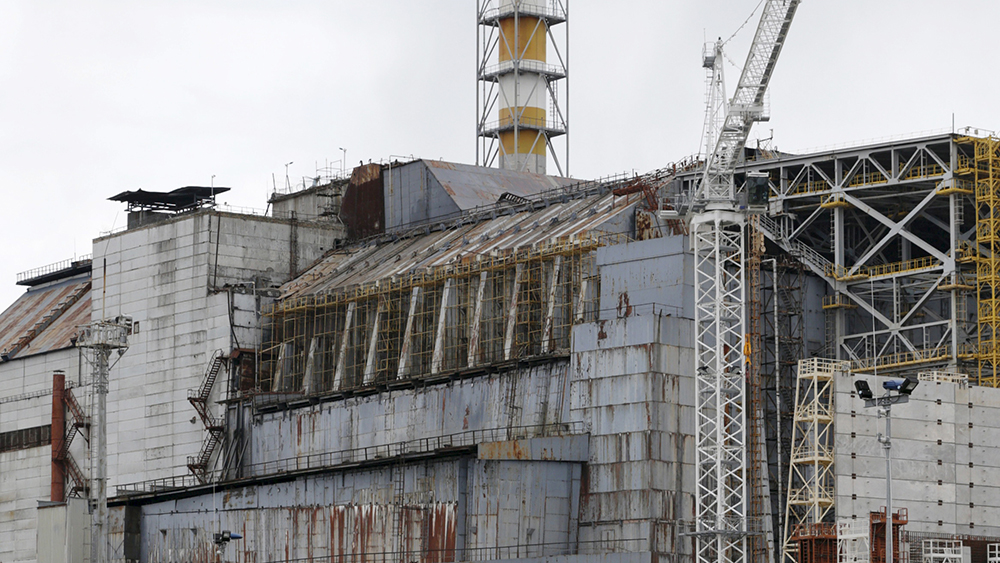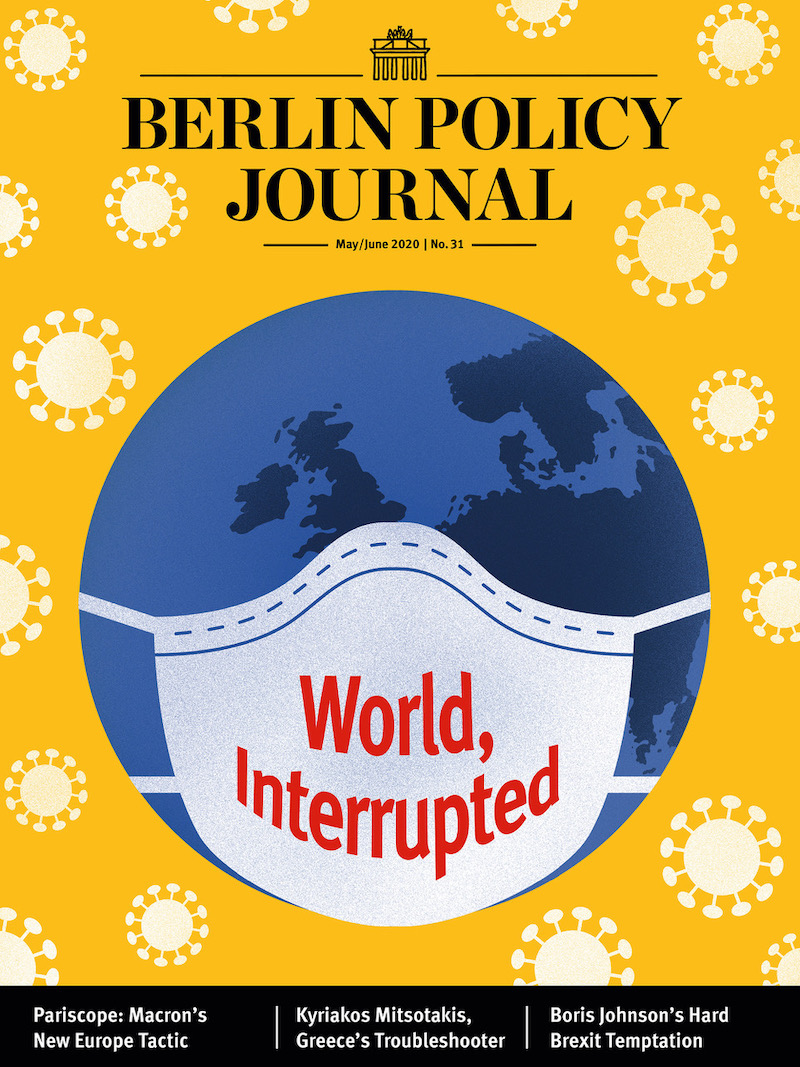Aging and overburdened reactors, insufficient funding, a nearby war: Ukrainian nuclear power plants present a threat for all of Europe. The country urgently needs to address problems of nuclear security.
After the last reactor at Chernobyl was shut down in 2000, Ukraine was left with four nuclear power plants (NPPs) with a total of 15 pressurized water reactors. But the political and economic uncertainty in the country is having an extremely negative effect on nuclear security. According to the State Nuclear Regulatory Inspectorate, there were 30 malfunctions at Ukrainian NPPs in 2017 alone. This is a problem that the international community needs to deal with—a major accident in Ukraine would have consequences far beyond the country’s borders.
Since the collapse of the Soviet Union, Ukrainian NPPs have only been repaired in the most urgent cases. Nor are the facilities being modernized, which shows how little attention Ukraine pays to nuclear and radiation security. Even when upgrades do take place, there are some components in nuclear reactors that cannot be replaced and that degrade over time, such as the high pressure vessel. Thirteen of Ukraine’s 15 reactors have exhausted or nearly exhausted their performance potential. Nevertheless, Ukraine has decided in these unsafe conditions to extend the lifespan of several nuclear power plants for eight to ten years—without the consent of the Russian state corporation for nuclear energy, Rosatom, which built the Ukrainian plants.
In 2016 alone, the International Atomic Energy Agency (IAEA) recorded ten accidents at Ukrainian NPPs. For example, an emergency situation occurred in the first unit of the Khmelnytskyi nuclear power plant on July 16, 2016, when there was a pressure build-up in the steam generating unit and the first power unit was disconnected from the electricity mains for repairs. The Ukrainian Government assured citizens that no radioactive material was released into the environment. But Andrey Artemenko, a Ukrainian MP, claims that the government concealed the serious nature of the accident. Officials failed to report that depressurization of the nuclear fuel cartridges also took place during the accident.
Since 2014, at Zaporizhia nuclear power plant, various power units have been shut down more than ten times. A loss of power in November 2015 was especially troubling: all soldiers and officers were given special equipment for protection from radiation and chemicals. In the same year, journalists revealed that more than 3000 spent nuclear fuel rods were being stored under an open sky, protected only by metal barrels. There is more to worry about than the weather. The plant is situated near the contested Donetsk region and is therefore exposed to combat operations. Currently only four out of six units work at the most powerful nuclear power plant in Ukraine.
Poor Maintenance and a Bigger Load
Even critical security updates, like the ones identified during stress tests performed after the Fukushima disaster, are running years behind schedule in Ukraine. The South Ukraine NPP is just one of the vulnerable stations. The wear and tear on some elements in the reactor vessel already exceeds the permissible levels tenfold. Every year, emergency shutdowns occur at all power units of this station.
The situation is aggravated by the fact that the load on nuclear power plants is increasing, due to a lack of coal and a number of combined heat and power stations going offline. From 2013 to 2017, the share of nuclear power in Ukraine increased from 47 to 60 percent, despite the many violations of IAEA norms and safety measures at nuclear plants. Nuclear power in Ukraine is carrying a bigger load just as it becomes less safe—not coincidentally.
Geopolitical tensions have also made things more dangerous. In 2005, Ukrainian NPPs began switching to US-made nuclear fuel, primarily for political reasons. That is one reason why Russia, which built the power plants, is no longer ready to guarantee their security. In fact, the US fuel is not intended for Russian reactors. Its use still leads to failures and malfunctions, despite constant improvements For example, in June 2017, the third power unit of the South Ukraine NPP was shut down because of a loss of pressure. After the incident, a group of employees at the South Ukraine NPP appealed to the prime minister of Ukraine, demanding they be allowed to immediately stop using Westinghouse nuclear fuel at the NPP due to the high risk of safety violations. However, political leaders are not planning to end cooperation with the American company, and new uses of Westinghouse fuel have been approved.
Nuclear and Unprotected
In early 2014, as Ukraine entered political chaos, the Ukrainian Foreign Ministry sent official letters to NATO, to the United States and the EU asking for help providing security. Ukraine got some help: the USA took part in exercises to protect the critical infrastructure at the Zaporizhia NPP in October 2017, and Ukraine was included in the NATO Center of Excellence for Energy Security.
But on the whole, Ukrainian nuclear and radiological infrastructure facilities are protected badly. In March 2017, the Aidar battalion, a volunteer unit formed to fight Russian forces, occupied the premises of the Institute for Nuclear Power Plant Safety Issues of the National Academy of Sciences of Ukraine. Neither the state security service officers nor the Ministry of Internal Affairs was able to prevent this from happening. Then in September 2017, charges were brought against men who had been illegally digging at a radioactive waste disposal site in Kropyvnytskyi to find metal for sale. Meanwhile, the chemical factory at Pridniprowski is unprotected by armed guards. It could be the target of a terrorist attack.
Cybersecurity is often not provided either. One issue is that, under Ukrainian law, it is the owner of a facility who is legally responsible for its safety, rather than the state. This means that some facilities are unprotected. “In Ukraine, the protection of important infrastructure facilities from cyberattacks has seven points on a scale from one to ten,” said Dmitry Dubov, head of the Information Security and Information Society Development Department of the National Institute for Strategic Studies.
According to regulations, the work of nuclear facilities is supposed to be monitored by an independent nuclear regulatory agency, the SNRIU. But in fact the heads of departments at the NPPs are being appointed by the state corporation Energoatom, meaning that the regulators are subordinate to the business they are meant to be regulating. On top of this, many top positions in the Ukrainian state regulator remain unfilled. For example, the position of Chief State Inspector for Nuclear and Radiation Safety has been vacant for three years.
Who Gets the Contracts?
In this muddled regulatory situation, there is no pressure on Energoatom to stick to international standards. The state corporation has been signing contracts with unqualified, inexperienced firms to provide technical reports on its facilities. For example, Ukrainian security authorities discovered in 2017 that a private firm’s report was full of mistakes. The emergency diesel generators, meant to cool the reactors if the power went out, were in fact not functioning properly. There are also indications that Energoatom employees are being hired and fired based on their political views.
The journal Energy Research & Social Science emphasizes that “most of the crashes and incidents in the Ukrainian energy sector have not been included in the reports in the past few years, although state media confirm that they happened.” And although the sector is underfinanced, people have still been finding ways to steal money: the general director of the Chernobyl NPP was recently accused of embezzling $690,000.
In 2001, Ukraine ratified the Joint Convention on the Safety of Spent Fuel Management, which states that all nuclear waste should be stored on the responsible country’s national territory. All contracts with Russia regarding nuclear fuel reprocessing contain the clause that in 2018, Ukraine should start getting back the products of its fuel processing. If not, international sanctions will be applied.
Storing Waste in the Chernobyl Zone
With this deadline in mind, the Nuclear Regulatory Agency had in fact approved a feasibility study in 2013 for the construction of a centralized repository to store Ukraine’s nuclear waste; it was to be located in the Chernobyl Exclusion Zone. However, there are some problems with the new construction: First of all, the tender for a contractor was neither transparent nor open. Secondly, the American company Holtec International, the winner of the tender in 2015, lacks the necessary experience and technological tools to handle this type of construction. Thirdly, the issue of waste burial is managed only by the Ukrainian side without international support. It is unclear how the facility will be protected from terrorists and intruders.
Since 2015, the cost of the project has increased from 126 to 300 million dollars. The construction has been postponed several times because the state regulator refused to include the necessary expenses in the Energoatom costing.
Additionally, problems have arisen with the distribution of land in the Chernobyl Exclusion Zone. In October 2016, the Cabinet of Ministers allocated 45.2 hectares in the exclusion zone to the the depository. The land was in the Kiev district, not far from the capital of Ukraine and the country’s main river, the Dnepr. Normally, such nuclear waste storage facilities would be placed far from large cities and rivers to prevent radioactive contamination.
Dangerous Money Problems
The average monthly salary for an expert working in a Ukrainian repository for spent radiation sources is about $220. However, salaries at the state corporation Energoatom are way higher, which obviously makes it difficult to attract highly qualified personnel to do the dirty work with nuclear waste. The low paychecks affect the workplace culture. In June 2017, smoke spread throughout the old Chernobyl nuclear power plant after a worker left a cigarette butt on the floor.
The infrastructure of the Ukrainian state corporation Radon, whose special integrated plants temporarily store spent ionizing radiation sources, has long been funded only out of leftover funds. Consequently, the Kiev Special Integrated Plant finds itself in critical condition, as shown by a spate of localized radiation accidents. The problem can only be solved by getting rid of the old repositories, but that requires resources that Ukraine does not have. The authorities do not even have enough money to buy petrol for transporting waste from obsolete special plants, or to immediately transport all radioactive waste into the exclusion zone. What money there is comes from foreign institutions. Money is so tight that the Minister of Natural Resources has offered to rent out part of the premises in Chernobyl.
The NPPs themselves are also suffering from financing issues. According to recent research, 60 percent of surveyed Ukrainian experts consider the depreciation of equipment to be the key challenge for nuclear industry in Ukraine. Estimates say it would cost a billion dollars to prolong the lifespan of all 15 power units. Since Energoatom doesn’t have that money, €600 million were taken from Euroatom and the EBRD on credit in 2014. There was hope of support from Westinghouse, but in 2017 the US company (owned, at the time, by Japan’s Toshiba) declared bankruptcy. This means Westinghouse will hardly be able to sponsor the upgrade of Ukrainian nuclear power plants. So the nuclear security of Europe depends on the Ukrainian government ability to find other foreign investors.
It’s Even Worse in the East
The security situation is worst in areas where the Ukrainian government does not have control. In Eastern Ukraine there are numerous nuclear facilities unable to regulated and controlled. Among them are 1200 sources of ionizing radiation, 65 facilities using ionizing radiation sources, and a repository for radioactive waste and ionizing radiation sources near the Donetsk chemical plant.
There is no up-to-date information on these facilities, but it is clear that they are increasingly unsafe. In July 2015, the National Security Agency found that rebels in Luhansk had sold a number of ionizing radiation sources from occupied coal mines in the area. In March 2016, the National Security Agency intercepted three ionizing radiation sources in Zaporizhia, which allegedly had been transported into Ukraine through uncontrolled areas on the Ukrainian-Russian border.
Military actions in the east of Ukraine have a direct impact on nuclear safety. For example in 2015, the Zaporizhia nuclear power plant was forced to conduct an emergency shutdown due to the disruption of electricity supply to the Crimea. That same year, an explosion of ammunition near the Donetsk chemical plant threatened a repository for radiation sources nearby.
The combination of all these risk factors means that Ukraine presents a serious threat of nuclear accidents and huge radioactive contamination not only to itself but to all of Europe. The international community urgently needs to check where Ukraine is violating international nuclear safety standards. If any violations are found, Ukraine nuclear facilities must be suspended or shut down.
It is also necessary to establish a special international commission under the aegis of the IAEA to monitor Kiev’s steps in the field of radioactive waste management and its conformity with key treaties like the Joint Convention on the Safety of Spent Fuel Management and the Convention on Nuclear Safety.
At the moment, the Ukrainian national regulatory authorities cannot guarantee the necessary control of nuclear safety in all areas of the country. The world should help them.







